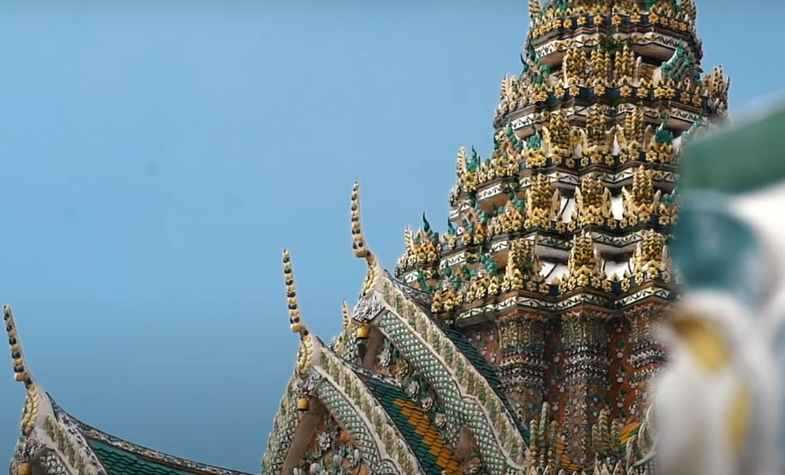Religion and belief in Thailand
Nearly 94% of Thais follow Theravada Buddhism, 5% of Thai people are Muslims, 0.7% of the population is Christian. In addition, there are other religions. Buddhism is the religion in Thailand that is followed by most people and has the most powerful influence on Thai society. Buddhism can be considered as the state religion in this country. Religions in Thailand apart from the above-mentioned parts, there are also a small number of people who follow religions such as Hinduism and Sikhism, most of whom are of Indian descent and they live in the capital
Bangkok.
Buddhism
Buddhism is a religion causing a great influence in the Thai community and society which is the national religion of Thailand. Buddhist teachings are flexibly and harmoniously applied as a guideline in the behavior of indigenous people. Most young Thai people practice in the temple for a different period.
Buddhists in Thailand attach great importance to meditating. Both monks and devotees have times to spend meditating on finding peace of the soul. In Bangkok and some rural areas, there are centers for learning and practicing meditation. Many foreign tourists are coming to Thailand just to learn and practice meditation here.
Many sources claim that Buddhism was introduced into Thailand in the early 3rd century BC following the massive Dharma propagation of Buddhist king Asoka (Ashoka) to Tich Lan and Burma. Thailand Buddhism later received more evangelists from Burma in 1044 and shamans from Sri Lanka in 1155. Most of them are in the Theravada tradition. However, Buddhism only really laid the foundations, developed, and deeply influenced Thai society from the Sukhothai dynasty (1237-1456). By that time, lots of kings believed in Dharma, built temples, supported the formation of monks to enhance the Dharma, and even had monastic monks, such as King Ramkhamheng and King Lithia.
Followed by the Ayudhya (1350-1766), Thonburi (1766-?) And Bangkok dynasties (1782-so far) founded by King Rama I, Buddhism continued to grow strongly in all fields. Especially under the Bangkok dynasty, many monks were ordained to study and compose many valuable Buddhist works to dedicate themselves to life.
It is believed that the Bangkok dynasty was a dynasty that supported Buddhist development in all aspects. Especially King Rama V (King Mongkut) was ordained at the Bovoranives Temple, he organized the re-editing of the Tripitaka of the Holy Deeds, in Pali in 1888, in 1893, completed with 39 volumes. This is the world's first Buddhist Tripitaka in Pali printed on paper (previously only written on the palm leaf). This Tripitaka was later published extensively to send to the Buddhist monks around the world. The king also established the Dhammayuttika sect of venerable monks, still active to this day in the Northeast, together with the main sect, Mahanikaya, which is the sect of the majority of Thai monks.

Pagodas and monks have played an important role in Thai society for more than 700 years. Buddhism has positively contributed to the life of the Thai people not only in terms of material and economics but also deeply into their spiritual life. Understanding and imbued with the teachings of cause and effect, and many core teachings of Buddhism, have helped Thai people to live under the Dharma. The gentle, loving, humble, and courteous nature of the Thai people has partly manifested from their moral practice.
Islam
It is flawed not to mention Islam, which is popular in the southern part of
Thailand, where many people of original Malaysian live. Pakistani immigrant groups also follow this religion. In addition, Islam also exists in ethnic minority areas in rural areas or the Chinese in the northern mountainous areas.
The National Islamic Council is made up of at least five members and serves to advise the Ministry of Education and the Home Affairs on issues related to Islam. The chairman of this council is the state advisor on Islam appointed by the king and holds a post in the Department of Religion of the Ministry of Education. In provinces where there’s a sufficient number of Muslims, a provincial council is established.
There are links between the government and the Muslim community, which include government funding for Muslim institutes, support for the construction of several major churches, and the donation of the Mecca pilgrimage fund of Thai Muslims. There are also many Muslim elementary and secondary schools in Thailand.
Christianity
Christianity was brought to Thailand by some Portuguese and Spanish in the 16th and 17th centuries. However, these missionaries have not reaped any positive results, even so, the church of Christianity still plays an important role in the life of the Thai people as well as in the religious community in Thailand.
The Chinese make up a high proportion of the Catholic community here, in addition, there are a few Laotians and Vietnamese. About half of the Catholics live in the Central region, with the remainder spread out in the North and Northeast regions. More than half of the parishioners in Thailand are Roman Catholics, the rest are Protestants.
The beliefs of the Chinese people
In addition to Buddhism as the dominant religion, many other religions in Thailand account for a relatively small percentage of followers. This non-Buddhist belief is sometimes not homogeneous to any particular religion. For example, the majority of the Chinese people here follow a mixture of both Confucian social doctrines, worshiping their ancestors, following Mahayana Buddhism at the same time. Taoism.
This is also what makes the religion in Thailand diverse, rich, respecting the religion of the majority, but also does not ignore the beliefs of different ethnic groups living in the same territory.

